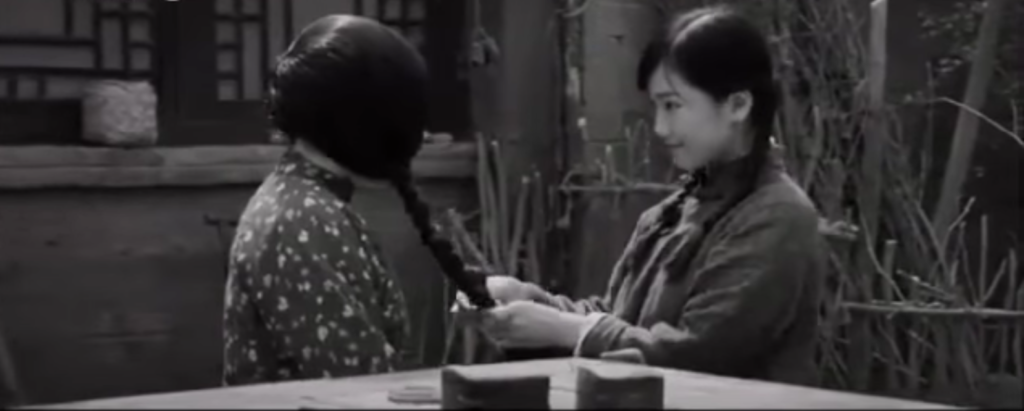¿Tienes Pluma?
I start with one insignificant moment in those early days of discovering the mesmerizing world of online dating when I was a graduate student in Granada, Spain. A local started chatting with me on the popular dating website Bakala. My interlocutor was amazed to be talking with someone from China. His knowledge of China was as limited as my knowledge of Spain; I had only been living there for a few months. At the start of the conversation, we asked each other basic information, our preferences, and our sexual fantasies. One of his messages arrived abruptly and really confused me: “¿Tienes pluma?”
My knowledge of the Spanish language being very limited back then, I could not understand what he was asking because I didn’t even know the word pluma. So, I looked it up in the dictionary. Two of the many meanings of pluma are feather and fountain pen. Feather? Pen? Why would he ask me that? It seemed very unlikely that he was making a madwoman-in-the-attic pun,1 since the “pen”/“penis” pun only works in English. Nor was I aware of any particular fetish that centred on fountain pens or even writing. ¿Tienes pluma? could mean, “Do you have a fountain pen?,” or perhaps more likely, “Do you have a feather?” But why would he want to know if I had a feather or a fountain pen? None of the direct translations made much sense.
My ignorance of the Spanish expression combined with the misconception that a dictionary definition could provide access to the real meaning of any word encouraged me to quickly interpret ¿Tienes pluma? as “Do you have feathers?,” meaning, “Are you hairy?”—the closest I could get to anything sexual. Without much hesitation, even with some pride, I answered him, “Cómo voy a tener pluma, soy Chino!,” thinking that it meant, “How could I be hairy? I am Chinese!” Now that I am much better versed in Spanish, I can imagine the confused face of my interlocutor: How does being ethnically Chinese guarantee that one does not tener pluma? My answer must have sounded rather strange, as much as his question had puzzled me a couple of minutes earlier.
Sadako of the People!
A video went viral in China some years ago. In it, the ghost or vengeful spirit (怨霊) named Sadako from the famous Japanese horror film Ring (Hideo Nakata, 1998) is sent, disguised as a film reel, by the Japanese army to a Chinese village as a secret weapon to kill members of the Chinese anti-Japanese resistance front. Dressed in a long white gown, with long dark hair covering her face—her dreadful signature look—she is unexpectedly well-received by the villagers. As is customary of revenge-seeking ghosts, Sadako reaches out to strangle the communist leader.

Sadako reaches out to the communist leader to strangle him.
Sadako reaches out to the communist leader to strangle him.
At that moment, the leader, who always anticipates what’s next, reaches out to shake her hands as a good communist would be expected to, saying, “Comrade, trust us! We will definitely avenge the wrong done to you!” An elderly woman comments without irony, “What a good girl! Look how terribly the Japanese have humiliated her!” A male villager-turned-soldier, noticing her bare feet, exclaims, “Look, she doesn’t even have shoes! So awful those Japanese!” He quickly takes off his shoes and hands them to her, “Take, comrade, wear mine!”

The communist leader shakes Sadako’s hand while saying, “the Japanese devils are indeed horrible!”
The communist leader shakes Sadako’s hand while saying, “the Japanese devils are indeed horrible!”
Titled 让贞子生活在我们抗日这片沃土上,她的心再冰冷也会融化 (Let Sadako Live on Our Fertile Land of Anti-Japanese Struggle, Even Her Frozen Heart Will Be Melted), this meme video combines the well-known style of anti-Japanese war movies with songs from revolutionary melodramas, such as “Sing a Mountain Song to the Party” and “The Red Detachment of Women.” Wholeheartedly welcomed by the humble villagers who urge her, “Don’t live in the well,” and “Come to live with dama (elder aunt),” Sadako undergoes a real transformation. She even joins the Party, following in the steps of the villager who gave her his shoes in the opening scene. She later falls in love with him in front of iconic portraits of Lenin and Stalin.

Sadako and her comrade and lover swear in front of the portraits of Lenin and Stalin, “I voluntarily join the Chinese Communist Party.”
Sadako and her comrade and lover swear in front of the portraits of Lenin and Stalin, “I voluntarily join the Chinese Communist Party.”
But tragedy befalls the humble village. While Sadako is ploughing the fields, the Japanese army bombs it, killing nearly all the people who have become her family. Sadako reappears, crawling out of a movie screen, at the Japanese military headquarters where the Japanese invaders and their Chinese collaborators hail her as “the great secret weapon.” To everyone’s surprise, she tears off her ghostly white gown, revealing her Chinese Liberation Army outfit, opens fire, and kills the enemies. The video ends with Sadako striking a typical revolutionary pose as a voiceover extols: “Roar, bullets of justice! Revenge, Sadako of the People!”
◊◊◊
These stories, a personal anecdote and a parodic meme video, could end here, sufficiently open for interpretation. What happens next might well be quite unrelated to my misunderstanding of peninsular Spanish and the misidentifications in the Chinese anti-Japanese front. My attempt to theorize out of these stories something I call “radical indifference” largely betrays what the very concept intends to capture. Even “betray” is a strong word: it betrays the reason why “stories” come before “theories” in this text. Theorization spoils; once theorized, a thing expires. Who but Lady Bracknell, the sassy aunt dressed in high camp in Oscar Wilde’s The Importance of Being Earnest, better understands this: “Ignorance is like a delicate exotic fruit; touch it and the bloom is gone”? Theorization therefore seems pompous.
◊◊◊
On Radical Indifference
After spending more time in Spain and gaining better command of Spanish, I came to understand that tener pluma was a slang expression used among gays in peninsular Spanish. It means being effeminate, and is probably related to the colourful feathers used by drag queens, the “professional homosexuals.”2 Tener pluma refers to a kind of embodied mariconada (faggotry). My answer to the Granadino’s question now sounds both completely absurd and somehow heroic: “Como voy a tener pluma, soy Chino!” If the equation of being Chinese with not being hairy might have some logic and empirical ground—although even that is quite contestable—being Chinese and being effeminate have little connection—as much as, for that matter, being hairy and being effeminate. Meanwhile, I have spent considerable time in the gay marketplace of desire in the West, where my Asian body and personhood have been routinely discriminated against because of the very Asianness that for the racist majority stands for emasculation and effeminacy. That is to say, in the Western world, even beyond the racist gay mainstream, the Asian body is the quintessential embodiment of effeminacy.3
Yet “the Western world” is quite a sloppy generalization. My Andalusian experience wouldn’t really fit in the critical literatures of sociology, queer theory, and neighbouring fields, which remain largely based on experience in the anglophone world. The Granada moment of misunderstanding strikes me as miraculously innocent, on both sides of the absurd conversation. At that particular time and in that specific place, there was little knowledge on either side about the other: my anonymous interlocutor did not seem to be affected by the racist stereotype of the effeminate Asian. He checked if I had a feather as he would ask any other person. (I later learned that ¿Tienes pluma? is a very common question in online situations.) I didn’t shy from outing myself as the hairless Chinese, without knowing that this could have gotten me nowhere, as happens to millions of Asians.4 Looking back, this trivial instance now strikes me as a particular form of resistance, both unplanned and involuntary, especially because it manages to bypass a series of assumptions and interpellations.
Today, however, after years of being interpellated into the racist stereotype of the Asian, I could no longer reply “Como voy a tener pluma, soy Chino!” with the same degree of innocence, conviction, and pride. No matter how much I try now, this tener pluma can no longer be unlearned as “having feather=being hairy.” The “effeminate gay Asian” stabilized as a stubborn marker in my self-identification and disidentification once I became part of the game, whether I participated in it or critiqued and resisted it.5
The Granada story is a tale of ignorance enabled by poor linguistic skills. It was neither intentional nor planned. I could not but miss the point. “Sadako of the People,” however, is a different kind of story, one of misrecognition. What fails Sadako in her attempt to scare and strangle the Chinese villagers is, paradoxically, her monstrosity. Represented by her long unwashed hair, her bare feet, and the well out of which she has crawled, her monstrosity not only fails to scare the villagers, but is precisely what allows them to identify her as one of them: disenfranchised and impoverished. And the communist leader immediately names the root of her monstrosity: the atrocities committed by the Japanese. The villagers’ indifference to and misrecognition of her monstrosity is based on identification: she must be one of us. Sadako only scared some of the villagers for a few moments, and we are not entirely sure if the girl who covered her eyes in the opening scene was scared by Sadako’s failed self-fashioning of monstrosity or by the magic of cinema itself.

Sadako is being treated as “one of us.”
Sadako is being treated as “one of us.”
The meme video plays with the highly stylized and codified representation of good Chinese villagers against evil Japanese invaders and their Chinese collaborators in revolutionary melodramas. The video doesn’t ridicule just this mechanical representation and its propaganda effect; it also turns around to ridicule the viewers’ nonchalance. Stubborn goodness and unequivocal badness both have transformational potential. Blind identification, while prompted by a certain degree of naivete, has advanced collective consciousness and community building, which have transformed Sadako—and by metonymy the disenfranchised proletariats of the whole world—into an anti-imperialist revolutionary, a “Sadako of the People.” Hence the title: Let Sadako Live on Our Fertile Land of Anti-Japanese Struggle, Even Her Frozen Heart Will Be Melted. Unlike the Granada incident, there is nothing ignorant about the villagers’ identification with Sadako the vengeful spirit. After all, the damnés de la terre united is hardly news.6

Sadako comes out of the screen and into “reality.” She will soon transform into a fighter for justice and anti-fascism.
Sadako comes out of the screen and into “reality.” She will soon transform into a fighter for justice and anti-fascism.
Meanwhile, if indifference suggests an intention, radical indifference points to something else, to a radicality that is almost contrary to progressive intention, cutting-edge impact, or extreme approach—the very opposite of what “radical” often invokes. Radical indifference is unintended and ambiguous.
That is to say, the particular form of misunderstanding or misrecognition, which for lack of a better term I have so far called radical indifference, cannot be paraphrased as “I don’t care,” nor is it a Bartlebyian “I’d prefer not to.” Resistance is at best its implication and effect, but not its intention—or rather, we cannot know in advance its intentionality. Radical indifference as resistance is not really a strategy, insofar as it is not a conscious and voluntary plan.
When discussing something like radical indifference, one cannot, it seems, circumvent—that is, one cannot be indifferent to—the concept of interpellation. In both stories, our protagonists seemingly provided alternatives to the overwhelmingly pessimistic determinism of Louis Althusser’s notion of interpellation. For them, including those who critique it because it “deprives the interpellated person of her agency to respond with variation or to reject the call altogether,”7 the language used in the interpellative process is assumed to be perfectly understandable to both the interpellant and the interpellated. Linguistic, and broadly speaking representational—or for that matter ideological—intelligibility have been unquestioningly assumed, even in Rey Chow’s astute critique of the fallacy of the existence of a subject prior to the so-called resistance to interpellation to which the critics of the Althusserian notion tend to appeal.8
But what if one does not understand the hailing? “Hey you!” could be misheard as “Hey Jude!” and so as “Don’t be afraid.” Or one might not speak English (well enough) to know what is meant by “Hey you!”—or for that matter by Hé, vous là-bas! It is perfectly conceivable that a newly arrived immigrant would hear “Hey you!” and interpret it as 嘿呦 (hei you)!—an exclamation commonly used in Chinese to express surprise or pain. The Althusserian policeman must have choked himself or broken his leg! The sudden pain makes him groan, 嘿呦 (Hey you)! Is the immigrant’s inability to answer the police’s interpellation because of linguistic inaptitude the secret reason why, besides nationalist monolinguism, some white Americans show such inexplicable anger towards those who do not speak English? What if she reached out and asked the police, “Are you ok?” This imagined scenario would move from misunderstanding (¿Tienes pluma?) to (mis-)identification (Sadako of the People).
Radical indifference emerges from a specific material condition of im/possibility, such as the lack of a certain linguistic skill or a shared precarity. It dwells at a space-time (instant or constant) that is radically different from that of the particular and dominant system that interpellates. This radical indifference, a form of unplanned and unorganized resistance, therefore cannot be appropriated or commodified. It is neither portable nor universally applicable, although it exists everywhere. Radical indifference could be a decolonial response to the belief that there is nothing outside of modernity. It cannot be co-opted: it is a rare instance that the all-devouring machine of neoliberal inclusivity—which has produced, for example, feminist consumerism and conscious capitalism—cannot incorporate. Radical indifference emerges from a stubborn elsewhere,9 impossible to educate, civilize, or colonize.
◊◊◊
The text could have stopped here, but I feel obliged to leave a note about what “radical indifference” is not. In short, radical indifference is not indifference. Radical indifference can only belong to the inferior position in a power asymmetry. The state, multinational corporations, the market, and the like cannot be radically indifferent. Theirs can only be a criminal indifference towards their citizens and workers, towards the dying immigrants on the Mediterranean Sea, towards senior citizens dying of Covid-19.
NOTES
1 See Sandra Gilbert and Susan Gubar, The Madwoman in the Attic (New Haven: Yale University Press, 1979).
2 Esther Newton, Mother Camp: Female Impersonators in America (Chicago: University of Chicago Press, 1972), 3.
3 See, for example, Hoang Tan Nguyen, A View from the Bottom: Asian American Masculinity and Sexual Representation (Durham: Duke University Press Books, 2014).
4 See, for example, Emerich Daroya, “‘Not into Chopsticks or Curries’: Erotic Capital and the Psychic Life of Racism on Grindr,” in The Psychic Life of Racism in Gay Men’s Communities, ed. Damien W. Riggs (Lanham: Lexington Books, 2018), 69–70.
5 See my reflection “Fragments in the Dark,” in Dark Rooms: Räume der Un/Sichtbarkeit, ed. Marietta Kesting and Sophia Kunze (Berlin: Neofelis Verlag, 2017), 159–168.
6 See Frantz Fanon, Les damnés de la terre (Paris: Découverte, 2002), originally published in 1961.
7 Rey Chow, The Protestant Ethnic and the Spirit of Capitalism (New York: Columbia University Press, 2002), 109.
8 Chow, 95–127.
9 For reflections on the concept of “elsewhere,” see José Rabasa, “Elsewheres: Radical Relativism and the Frontiers of Empire,” in Qui Parle: Literature, Philosophy, Visual Arts History 16, no. 1 (2006): 71–94; and my Queer Ancient Ways: A Decolonial Exploration (Santa Barbara: punctum books, 2018).
ABOUT THE AUTHOR
Zairong Xiang is Assistant Professor of Comparative Literature and Associate Director of Art at Duke Kunshan University. He was a fellow at the ICI-Berlin Institute for Cultural Inquiry (2014–2016) and a postdoctoral fellow in the “minor cosmopolitanisms” DFG Research Training Group at Potsdam University (2016–2020).
Zairong Xiang is the author of Queer Ancient Ways: A Decolonial Exploration (punctum books, 2018). He was the chief curator of “minor cosmopolitan weekend” at HKW Haus der Kulturen der Welt, Berlin (2018) and editor of the related catalogue titled minor cosmopolitan: Thinking Art, Politics and the Universe Together Otherwise (Diaphanes, 2020). He co-edited the special issue on “The Ontology of the Couple” for GLQ: A Journal of Lesbian and Gay Studies (2019) and the “Hyperimage” special issue for New Art (2018). he is co-curating the 2021 Guangzhou Image Triennial and working on two projects, dealing respectively with the concepts of “transdualism” and “counterfeit” in the Global South, with a focus on Latin America and China. His writings can be read at www.xiangzairong.com.



